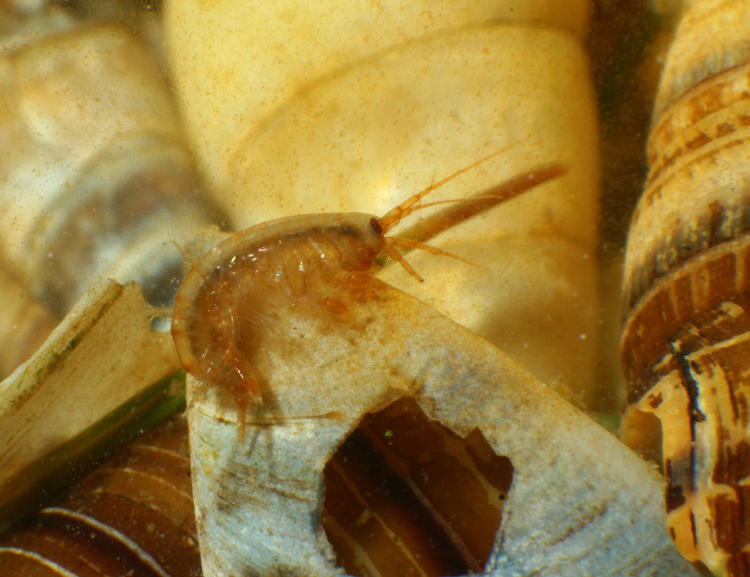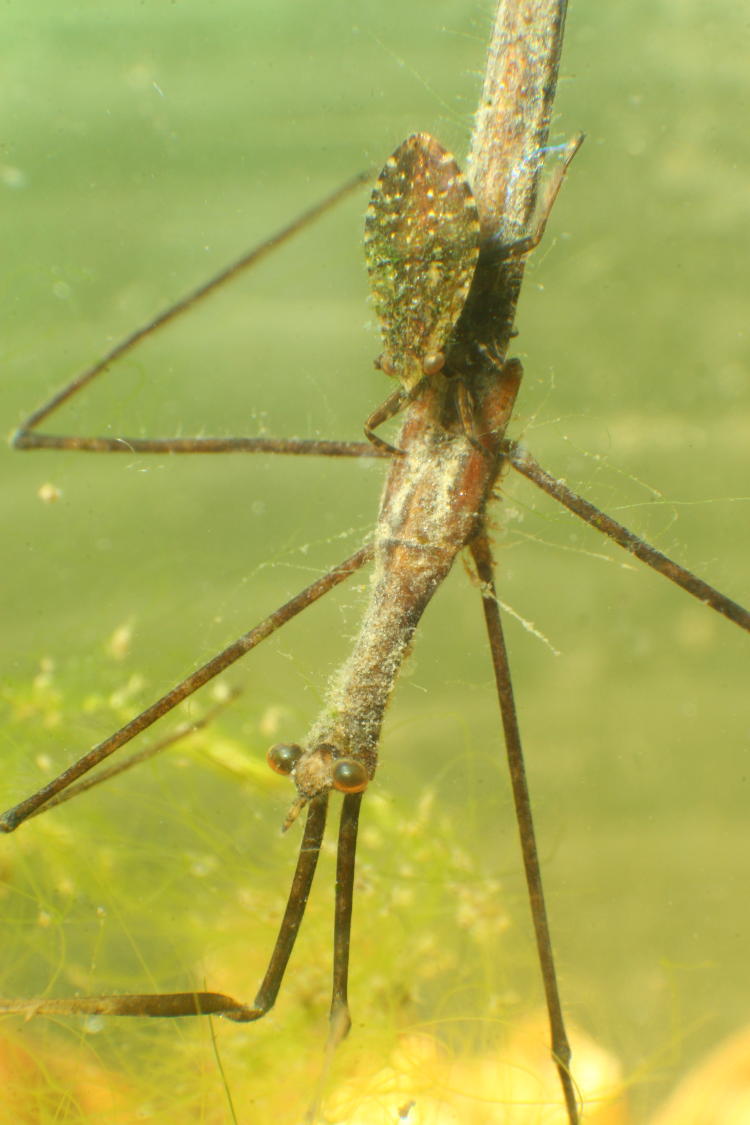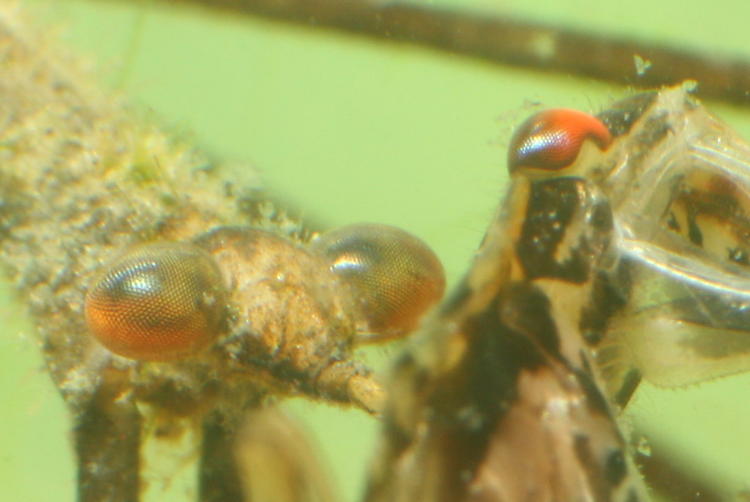Still doing the terrible title puns, of course – hey, you do 1600+ posts and see how your titling efforts hold up. This has nothing whatsoever to do with taking delight in terrible puns, not at all…
We’re going to go back several weeks here, to a period just after the New York trip (First, second, and third posts.) I had collected several dozen freshwater snail shells and a handful of little aquatic critters while there, but never devoted the time to photographing them on location, as it were, so they came back down with me. Then, while checking out the nearby pond with my brother, I spotted another curious aquatic arthropod, and went back a couple days later and retrieved it – this was atypical luck on my part, since most times when I spot something that I have no way of collecting at the time, I never see it again on subsequent searches.
But let’s not jump ahead too far – building the right momentum within a post is an art (notice that I said nothing about my skills, or lack thereof, at such art.) We’ll start with the NY critters.

My brother felt these were juvenile crayfish, which I cannot dispute since I have no idea what juvenile crayfish look like; all I know is they look a lot like the amphipods that I used to find all the time in Florida. Only those were saltwater denizens, while this is fresh. Getting a decent picture was somewhat hampered by the staining of the tank’s glass, but much more so by the hyperactivity of the little spuds – attempting to catch one during its brief pause usually consisted of almost pinning focus down before they flitted off again. All of these photos, by the way, were taken with the same macro aquarium found here; I can’t stress how handy such a thing is.
The critter, by the way, is only a few millimeters long, while the substrate is/are the shells that I mentioned, probably averaging about 12mm or thereabouts. There is a wide variety of coloration to them, which will appear in some later post, possibly during the winter slow season.
While chasing images of these and others, I noticed that a little bit of debris in the tank, what appeared to be a stem fragment or something, was moving rather purposefully. It was minuscule in size and not terribly close to the glass, so my images aren’t that impressive (I mean, even less so than normal,) but here it is anyway.

Bear in mind this is no longer than the amphipod/crayfish, but seen at this magnification, the pattern of its camouflage is a bit more obvious. By eye, it just appeared to be random flotsam. Or jetsam – I don’t know how to tell them apart.

When I attempted to shift the shell it was perambulating across closer to the glass, naturally it ducked into hiding, but eventually peeked out enough to get a hint of gross detail. I never tried to identify this, since what I have is so sparse on characteristics that might assist, so I’m only guessing it’s a larva of some kind, one of many that constructs a case made from available materials to protect itself from marauding nature photographers, which only half worked. After leaving it alone for a few minutes, it simply vanished, but that’s not as mysterious as it might sound given the huge number of hidey-holes among the shells.
I also captured a few regular NC residents, which have appeared here a few times before: the giant water bugs, or electric light bugs, more accurately known as Belostoma flumineum.

Yes, they’re doing what you think they’re doing, if you think they’re eating their own kind, or being eaten by their own kind (depending on which you focused upon.) I’ve never kept them for very long in the macro aquarium, but they’ve shown little hesitation in immediately making themselves at home, which means ravenously finding anything that they might consider edible. It’s a bug-eat-bug world out there.
When one paused against the glass, I took the opportunity to illustrate the curious underside, which likely aids in their respiration.

You can see that the tip of the abdomen is breaking the surface and is likely gathering air in that way, perhaps trapping it against the underside of the abdomen with what appears to be tiny hairs to assist this. I’m speculating ignorantly, of course, because I’m just a photographer, not an entomologist; one of these days I’ll actually partner up with someone who has the knowledge, and together we’ll become this unstoppable crime-fighting duo. Or something.
Now let’s get to the star of the show.

This is a water scorpion, genus Ranatra, which is as far as I could pin it down right now since BugGuide.net is kinda thin on distinguishing details among the ten species in the region. The body length, from the tip of that Jughead nose to the snorkelass, is in excess of 40mm – quite impressive to see at the surface of an overflow pool. And that proboscis announces that this is not a vegetarian. Nonetheless, one of the giant water bugs didn’t find this too threatening.

While both are predatory, they remained like this for some time, neither appearing concerned about the other (and don’t ask me where that blue fiber came from – it just happened to be in the water and there wasn’t much I could do about it without disturbing things, even if I had seen it before snapping the frames.) Perhaps there is some form of professional courtesy, a recognition of Hemipteran peers, that prevents them from preying on one another.

Or perhaps not. After finishing the initial photo session, I turned off the bright focusing light that I had over the tank and turned to the computer to download the images; some time later I glanced over and found this, so, you know, maybe bug brains aren’t all that sharp, hard as that may be to imagine.
“Hey, Al,” I hear you say, “how about we finish up with a detail inset of that last frame?” Well, seriously, I was gonna spare you that, but since you’re asking, I guess you’re up to it. So here’s a nice closeup of the water scorpion and its prey. Because you’re so insistent.

I mean, I can’t blame you for asking, because those eyes (of both species) are pretty cool to look at, and the water masked any milkshake-slurpy sounds that may have been emanating. Meanwhile, is that algae or fungus or something? I honestly don’t know.
I have a lot more images on the way, but they’re of totally unrelated subjects, for better or worse. We’re getting there.




















































